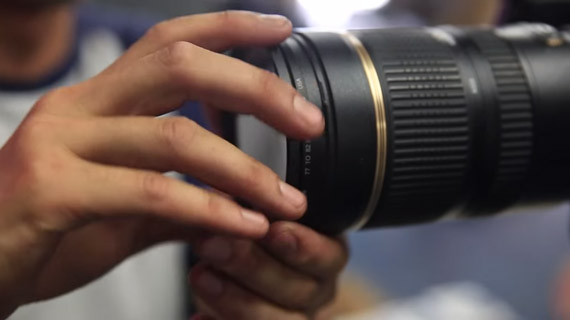You may think diffusion filters are a thing of the past, but pro photographer Jay P. Morgan thinks they are starting to make a great comeback. In the video below, he compares three different Tiffen diffusion filters and breaks down the pros and cons of each. Take a look and see if a diffusion filter is what your gear bag is missing:
Diffusion Basics
If you’re new to the science of diffusion, there are few fundamentals you should know. While they are easy to use, it’s always a good idea to know as much as possible about the diffusers so you can get the most out of them.
- Bleeding – Using a diffusion filter will make the highlights of the photograph bleed into the shadows, giving it a softened look. This is an easy way to tell if a diffusion filter has been used.
- Matching Diffusers to Lenses – A key thing to keep in mind when purchasing diffuser filters is that the longer the lens you use, the more diffusion it will require. As Morgan explained in the video, a 200mm lens will need a lot more than a 35mm lens.
- Skin Tone – You’ll notice right away that diffusers reduce the contrast of your image, which softens skin tones, giving them a smoother appearance.

Most diffusion filters screw directly onto the front of the lens.
Comparing the Filters
Tiffen, the brand of filters Morgan reviewed in the video, makes three different types of filters:
- Black Satin filters are good for creating a grainy and warm feel. The smooth out blemishes well.

Black Satin 2 Filter
- Satin diffusion filters work similarly to their Black Satin counterparts; they smooth out blemishes well, but they will also have slightly less grain and more glow.

Satin 2 Filter
- Pearlescents are great filters to use when you want a nice glow and muted contrast without compromising focus.

Pearlescent 2 Filter
Each type of diffusion filter comes in varying strengths, making it easy to get the look you are going for. They start and 1/2 strength and get increasingly stronger. Another great thing about these filters is the ability to stack them for a very fine tuned look.
What kinds of filters do you use most?
Like This Article?
Don't Miss The Next One!
Join over 100,000 photographers of all experience levels who receive our free photography tips and articles to stay current:






Leave a Reply